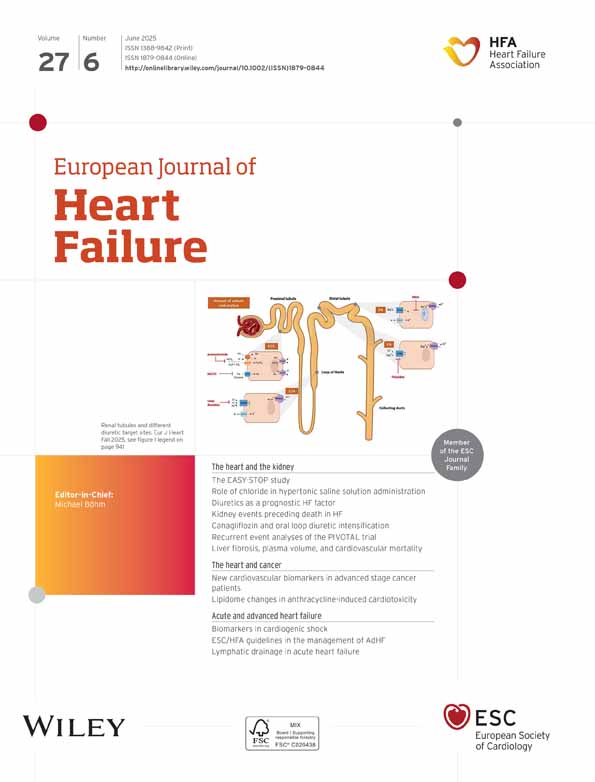Home-based urinary sodium monitoring via point-of-care testing for personalized diuretic titration in heart failure management: The EASY-STOP study
Abstract
Aims
Loop diuretics alleviate symptoms in heart failure (HF), but despite recommendations for dynamic dosing, implementation in practice remains challenging. The EASY-STOP trial investigated whether ambulatory urinary sodium monitoring using a point-of-care sensor could guide diuretic down-titration.
Methods and results
This prospective, single-centre study enrolled 50 euvolaemic HF patients on stable guideline-directed medical therapy for ≥3 months and receiving maintenance loop diuretic (≥20 mg furosemide equivalent daily). After a 1-week baseline phase of daily self-measured first-void and post-diuretic urinary sodium assessment, loop diuretics were gradually reduced by 50% and discontinued when ≤20 mg furosemide equivalents. Urinary monitoring continued for another 3 weeks. Successful down-titration was defined as remaining congestion-free (no rise in New York Heart Association class ≥I, oedema, pleural effusion, ascites, rise in right ventricular systolic pressure ≥10 mmHg, or worsening diastolic dysfunction ≥1 grade). Investigators and patients were blinded for urinary sodium analysis during the study. Patients were 75 (68–79) years old, had left ventricular ejection fraction 46 (± 11)%, estimated glomerular filtration rate 47 (35–65) ml/min and N-terminal pro-B-type natriuretic peptide 899 (326–2558) ng/L. Among the 50 patients, 62 diuretic down-titrations were performed, of which 34 (55%) were successful. Baseline urinary sodium before loop diuretic down-titration was similar between groups. However, patients who successfully achieved down-titration exhibited a significant increase in first-void urinary sodium following down-titration (53–74 mmol/L, p < 0.001), whereas those requiring reinitiation showed no significant change (56–58 mmol/L, p = 0.331). A 10 mmol/L increase predicted successful down-titration with 79.4% sensitivity and 78.6% specificity (area under the curve = 0.851).
Conclusions
Point-of-care urinary sodium monitoring may represent a non-invasive and personalized approach to diuretic titration in HF management. Further trials are warranted to validate its clinical utility and long-term benefits.




